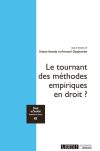Paper given at the 7th International Roundtable for the Semiotics of Law, Boulogne-sur-mer, 1-4 July 2008 by Richard Mohr.
Abstract
The fiftieth anniversary of the publication of The Uses of Argument and La Nouvelle Rhétorique provides an opportunity to consider their place at the intellectual watershed of the twentieth century. Both called on methods from law and jurisprudence to rediscover forms of discourse and decision making that had been eclipsed since the Enlightenment.
In The Uses of Argument the philosopher Stephen Toulmin set out to overcome the grip of analytic logic on English philosophy, seeking instead a model of argument that would be useful in real life situations of probable warrants for uncertain claims. He went so far as to call logic itself ‘generalised jurisprudence’. The Belgians Chaïm Perelman and Lucie Olbrechts-Tyteca sought to renew the tradition of rhetoric as a foundation for argument in La Nouvelle Rhétorique. Both these works looked to unfashionable traditions to guide decision-making in situations of conflict and uncertainty.
Methods of the interpretation of meaning are central to these two approaches to argument. The contributions these two works have made to legal semiotics will be explored in the context of other intellectual developments in the fifty years since their publication. My thesis is that the Enlightenment ended in 1958, with the publication of these two books.




